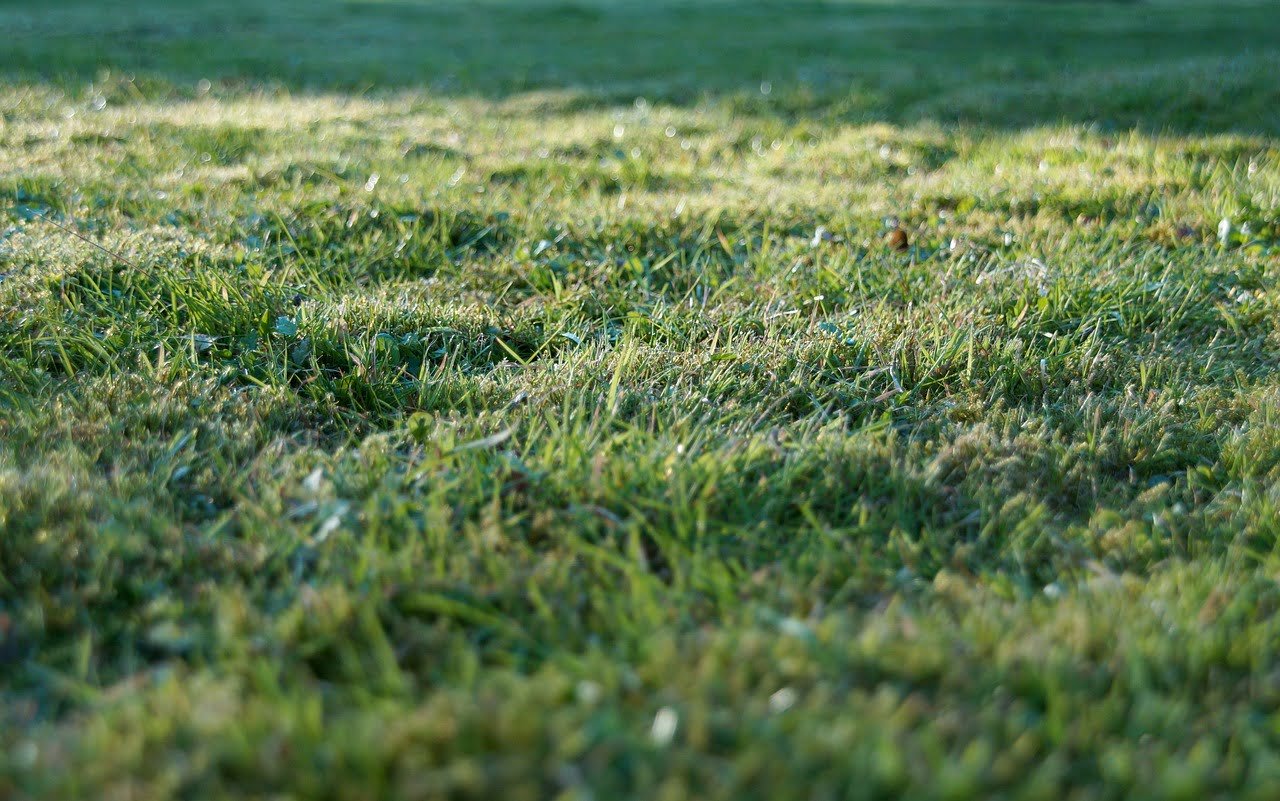As the chill of February lingers, your lawn may be the last thing on your mind. The frosty ground and lack of growth means it’s easy to overlook lawn care this time of year. What you do – or don’t do – for your lawn right now makes all the difference in how healthy and lush (or lacklustre) it looks later. So bundle up and don’t neglect that dormant grass! This month requires strategic TLC to avoid issues like weeds, pests, diseases and poor growth down the road.
Our comprehensive Lawn Care In February guide covers everything you need to know. We’ll explore key preparation tasks, maintenance dos and don’ts, and tips to make your lawn the envy of the neighbourhood. Let’s get into it!
Top Rule: Avoid Lawn Traffic
First and foremost, keeping foot traffic to a minimum at this time of year is crucial. The frosty or muddy ground is highly vulnerable to compaction and the damage can linger for months. So how do you protect your lawn? Simple barriers like taped off areas of lawn can do wonders diverting activity away from the grass.
It may feel extreme, but the health of your lawn depends on folks staying off it as much as possible until soils thaw. Compaction quite literally squeezes air pockets and space for water drainage out from grass plant’s root zones. Poor airflow and soggy soil leads to very poor growing conditions. Not to mention foot imprints damaging emerging seedlings, encouraging weeds, and just generally packing the earth as hard as concrete.
So be strict about keeping foot traffic to hard surfaces only! The grass will thank you later on.
Clear Out Winter Debris
Although you are trying to stay off your lawn as much as possible, there are a few jobs which you may briefly needs to attend to. It’s best to clear those fallen sticks, leaves, garbage and other debris from your lawn. While those decaying oak leaves may make nice mulch for forest floors, they’ll smother grass when left in piles or drifts. Twigs, trash and other junk also need to go.
Aim to remove debris at least every other week through late winter. This ensures sunlight and moisture can properly reach the soil and grass plants below while minimizing hiding spots for rodents . Come spring green-up, you’ll have a smooth, even lawn surface ready for rapid growth rather than bare patches to address.
Carefully Trim Edges
If your lawn is looking a little messy, and your desperate to give it a trim, perhaps just tidy up the edges. Outline beds, borders, walkways and other hardscapes with crisp, clean lines. This keeps increasing grass growth from invading garden areas later on.
Late winter is the perfect time to sculpt neat edges since dormant grass growth is minimal. No need to re-edge again for months! Just be sure to safely manoeuvre equipment over frosty or muddy turf. Trim only on dry days and leave as little impact as possible.
Prepare For Seeding
Believe it or not, you can still successfully sow grass seed in February! The process of dormant seeding timed before spring growth allows tender new seedlings ample time to establish roots. As long as the seed-to-soil contact remains undisturbed over winter, you can expect proper germination once the soil warms up a little.
For best results, choose quality seed varieties suited to your conditions. Prepare soil to receive seed, broadcast evenly according to instructions, then top-dress with protective layer. Come spring, healthy baby grass should be emerging!
Mow Cautiously
You can (carefully) mow in February – but only if needed. Let dormant grass grow out a bit longer for cold protection. But if clumps get wildly high, give the lawn a gentle cut on a dry afternoon.
Set mower blades to their maximum height and take care not to scalp turf. Remove no more than 1/3 of existing blade length per pass to avoid stressing plants. Proper mower maintenance like sharpening blades beforehand improves cutting quality, too. When done, grass should look uniformly trimmed without any drastic bald spots.
Lawn Care In February – Optional Extras
- Applying slow-release fertilizer near month’s end jumpstarts nutrients for impending growth. Adhere carefully to product directions on how much/when to apply for your grass type and zone.
- Core aerating compacted areas introduces much-needed air pockets into the soil. Rent an aerator or hire a landscape company to perforate patches that puddle.
- Hold off on dethatching or scarifying via aggressive raking. These stressful measures are best saved for when grass enters prime growth mode later on.
- Scout for early sprouting winter weeds and unwanted grass species. Selectively spot-treat using appropriate herbicide products when identified.
Handy Lawn Care in February Tips
To recap key points as you care for your lawn this February:
- Absolutely no foot traffic on frozen, muddy turf – use barriers if needed to prevent people walking on grass. Compaction causes huge issues otherwise.
- Remove fallen leaves, debris, garbage, etc. whenever spotted. This prevents dead grass spots, pest nesting, and other headaches.
- Define crisp lawn edges with shears/edger while growth is slow. No encroaching weeds later!
- Sow grass seed now for dormant planting success.
- Mow carefully only if required. Never scalp lawns when frost persists – leave grass a bit taller.
- Consider optional jobs like fertilizing, aerating, spot-weed control to get added jump on spring.
FAQs – Lawn Care In February
Q. What should I do to my grass in February?
In February, focus on clearing debris, defining edges, preparing for seeding, and mowing cautiously if needed. Most importantly, take steps to keep foot traffic completely off grass to prevent soil compaction. Other key jobs are clearing fallen leaves/debris, neatly edging beds and borders, dormant seeding new lawn areas, and mowing gently if required.
Q. What is the best lawn fertilizer for February?
The best fertilizers for February are slow-release, organic options that will slowly provide nutrients to grass plants as soils begin to thaw. Many professionals recommend applying this in late February just before the spring rush of growth.
Q. Can I scarify my lawn in February?
It’s best to avoid aggressive scarifying and dethatching techniques in February while grass plants are dormant. Wait until warmer weather and renewed growing season so turf can recover from the stress. Spot-treat problem patches only if essential.
Q. Can you aerate lawn in February?
Yes, core aerating compacted areas in February is recommended. The aeration holes facilitate better water, air and nutrient intake through the soil before rapid spring growth starts. Just use caution operating machinery over soft, muddy turf.
Q. When should you not cut grass?
Avoid mowing frosty, frozen, or excessively wet grass because it damages the tender blades. Wait for a dry day with temperatures around 50°F or warmer so grass plants can bounce back from cutting without too much stress.
Q. Should I reseed my lawn after scarifying?
Yes, reseeding after aggressive scarifying helps restore a thick lawn. The disruption caused by power raking removes debris but also rips out existing grass plants. Following up quickly with quality seed blends prevents bare patches and weed growth.






